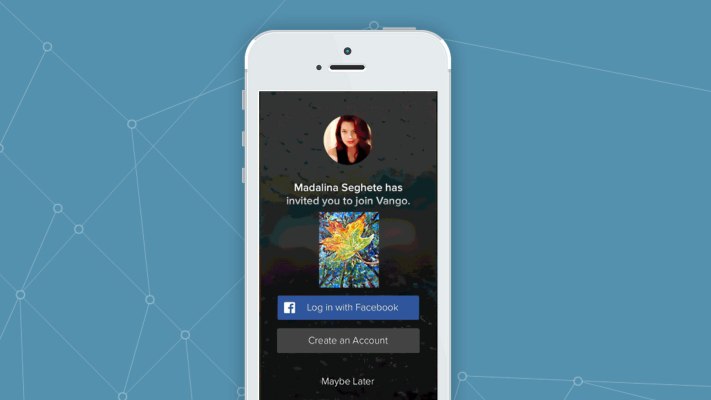Palo Alto-based Branch Metrics has just raised $3 million from NEA and others to address a series of challenges affecting the mobile app ecosystem today. The company has come up with an advanced “deep linking” technology for app developers, which allows for a more powerful means of sharing content from within apps, referring or inviting others to install apps, and more.
The solution goes beyond the current set of deep linking technologies, which only work successfully when users have the app already installed; with Branch Metrics’ solution, it’s able to direct users to the right place within an app even if the app was not installed when the link was first clicked.
App developers and marketers will quickly understand the benefit to the technology Branch Metrics has developed – and so did investors, it seems – the company ended up having their pick of VCs to work with, and chose NEA after getting a term sheet in just three days.
Others participating in the funding include Mar Hershenson (Pejman Mar Ventures), Ben Narasin (TriplePoint Capital), and other angels. NEA’s Scott Sandell and Forest Baskett will be working with Branch Metrics going forward, as will Hershenson.
From Photo Books To Deep Links
Branch Metrics originally begin its life as Kindred Prints, an app that allows you to print and ship custom photo books from your phone.
Founded by three Stanford grad students Alex Austin, Mike Molinet, and Mada Seghete in June 2013, the app was fairly popular – Apple ended up featuring it in the App Store several times, in fact. But the team kept encountering problems that prevented it from growing further, explains Austin, CEO at Branch Metrics.
“There were a couple of things that were completely broken with the mobile ecosystem,” he says. “Sharing and referrals were the two pieces we struggled with.”
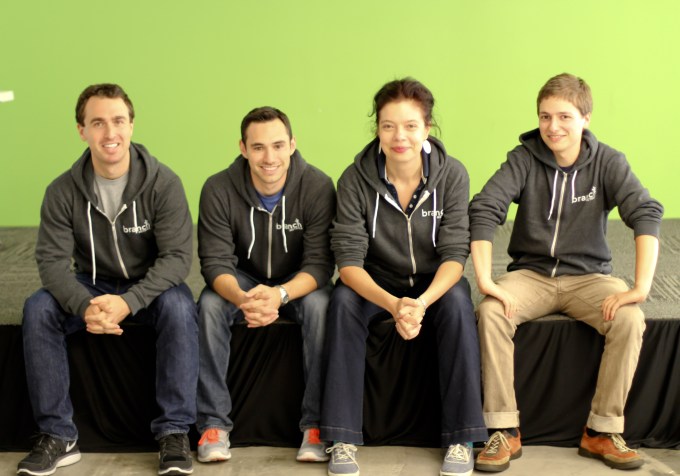
Austin explains that, as a mobile-first company, Kindred wanted to create a URL that users could share with others or reference later which would point to the content they created with the Kindred Prints app.
On mobile, that doesn’t actually work, he says. Developers could either build out a web app to complement their mobile software and point users there when clicked, or they could use traditional deep link technology to point to a specific page within the app.
Today’s smart deep links can detect what device you’re using (desktop or mobile), or whether you have the app installed on your phone, in order to direct you appropriately.
But the problem is that mobile deep links only really work if the other user already has the app installed on their phone, too. If they don’t, deep links just direct the person who clicked the link to download the app from the App Store or Google Play. Unfortunately, once they do, the context of what they intended to view gets lost. A user may have shared “view my photobook!,” but after their friends install the app and launch it, they end up just staring at a sign-up screen. Even if they get through the sign-up process, they have to go seek out the shared content anew.
Branch Metrics changes that.
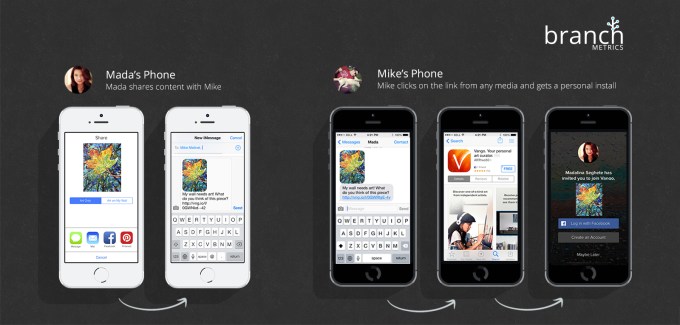
How Branch Metrics’ Links Work
“The fact that we couldn’t link to content inside of our app without building a whole website infrastructure was just mind-blowing,” says Austin.
That’s how the team came up with the idea to make a more intelligent deep link, which keeps users flowing through apps in a way that’s similar to how the web works, rather than the isolated, siloed software that mobile apps – until recently – had become.
With advances in deep linking from all major tech players, including Apple, Google, Facebook and Twitter, apps are opening up to allow more interoperability. Google users can click links from mobile searches that open apps on their phone, and Apple users can move in between apps through deep links and iOS 8’s extensions.
And now with Branch Metrics, when a user who doesn’t have an app installed clicks on a shared link, they can download the app from Google Play or the Apple App Store, depending on their device, then launch the app and be immediately directed to the appropriate content.
To make this magic happen, Branch Metrics is combining the more traditional deep linking technology with the matching or “fingerprinting” tech that’s used by those in the paid app install business. (These companies help developers track who installed an app from which link, by passing unique information about the device, collect via the browser.)
Shared Links, Referrals And More
This combination doesn’t only impact the now awkward process of inviting a friend to view some content you created or shared within an app – handled today by spamming your friends with links via email or SMS, begging them to download the app in question. It also means Branch Metrics can help developers establish referral systems on mobile where users get custom URLs permanently associated with their account (as opposed to clunky ‘invite’ codes entered in at checkout, as in Uber, for example).
What’s more, developers can now even create custom onboarding flows for users, where friends could see personalized messages that indicate who invited them, while also offering them discounts or credits. (See below).
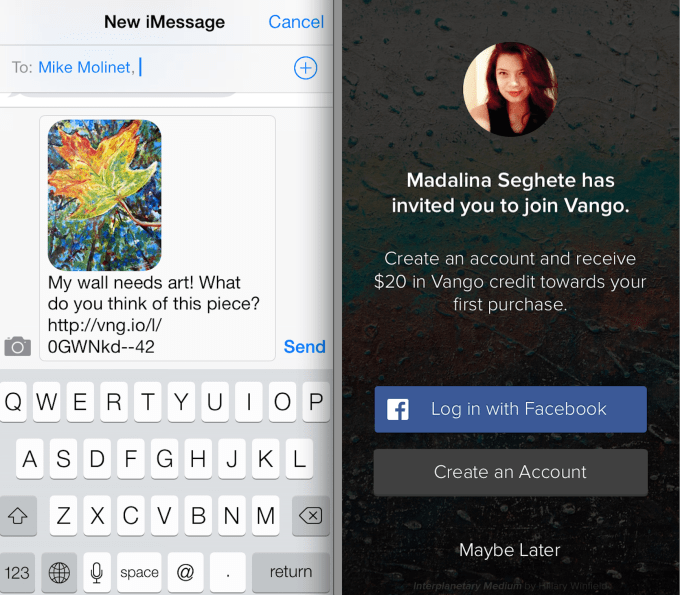
And app publishers can send their current users directly to content that exists behind a login screen via Branch Metrics’ “log-in links,” which automatically login a “fingerprinted” mobile user without pausing for the sign-in process.
In addition, Branch Metrics includes an analytics dashboard (subscription pricing TBD), where app publishers can learn more about their users, including things like who’s sharing the most, who’s the most engaged, conversion details, K-factor (a measure of virality) and more.
“We’re trying productize the growth hacker,” Austin explains.
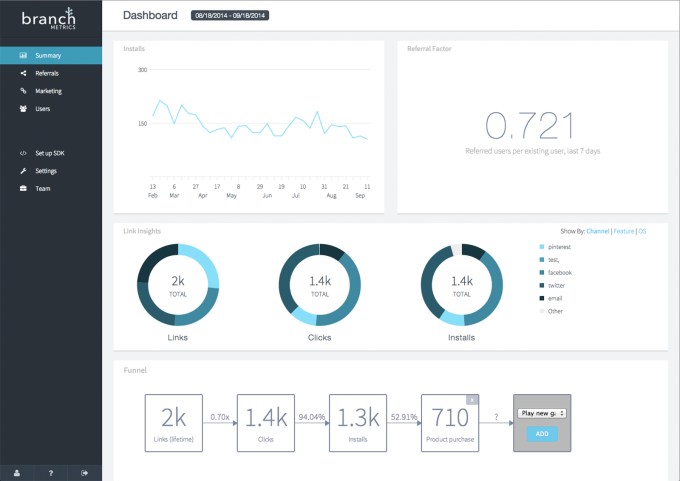
Since launching 12 weeks ago, the company has signed up 30 developers who are live now with the software (available via SDKs) and has another 30 in the works, for a combined reach of 25 million devices. The core linking service will remain free, as the plan is to eventually charge for access to the dashboard.
Branch Metrics will now be the core focus for the company going forward, and the Kindred Photo Book app will find itself a new home soon.
Both the iOS and Android SDKs are available for download here. A web SDK, which will allow cross-platform developers to point to the web content featuring smart banners offering to text app links to a user’s phone, will arrive in a week.
